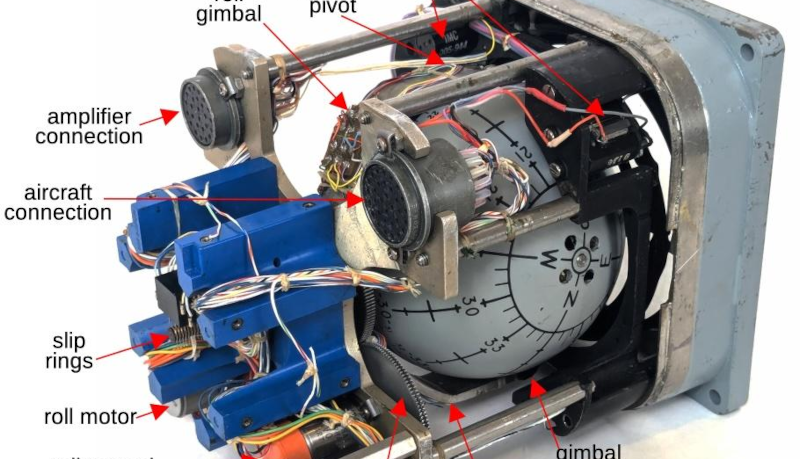[Ken] recently obtained an attitude indicator—sometimes called an artificial horizon—from an F-4 fighter jet. Unlike some indicators, the F-4’s can rotate to show pitch, roll, and yaw, so it moves in three different directions. [Ken] wondered how that could work, so, like any of us, he took it apart to find out.
With the cover off, the device is a marvel of compact design. Then you realize that some of the circuit is inside the ball, so there’s even more than it appears at a quick glance. As you might have guessed, there are two separate slip rings that allow the ball to turn freely without tangling wires. Of course, even if you don’t tangle wires, getting the ball to reflect the aircraft’s orientation is an exercise in control theory, and [Ken] shows us the servo loop that makes it happen. There’s a gyroscope and synchros—sometimes known by the trade name selsyn—to keep everything in the same position.
You have to be amazed by the designers of things like this. Sophisticated both electrically and mechanically, rugged, compact, and able to handle a lot of stress. Good thing it didn’t have to be cheap.
We’ve seen inside an ADI before. If you want to make any of this look simple, check out the mechanical flight computers from the 1950s.
















A perfect desktop toy for a flat-earthian.
I’m sure this is altitude and not attitude ;)
No it is the direction of the plane in space. The altimeter measures your altitude
If you’re going to be wrong, you may as well be confidently wrong!
Haha my thoughts exactly.
Never disappointed with anything that Ken Sherriff works on.
I worked on F-4E & G Avionics for nearly ten years. On occasion something like that comes up on Ebay. Someone listed near complete from instrument panel for $1200. That would be a hard sell to my wife!
“The artificial horizon – nearly twice as good as the actual horizon.”
With less calories!
The F-4 Phantom II — the world’s leading distributor of MiG parts.